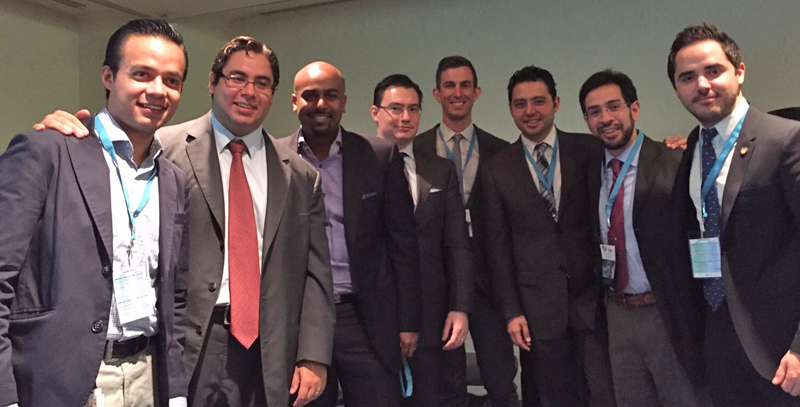International Fellowships: Opportunities For Collaboration Between Mexico and the U.S.
Nov 18, 2015 | Aaron P. Kithcart, MD, PhD
International
The ACC is recognized as the professional home for cardiologists in the U.S., yet is also committed to having an equally strong international presence. Through its International Chapters, the ACC continues to advance cardiovascular medicine throughout Europe, Asia, South America and Mexico.
This past October, John Lazarus, MD, PhD, an FIT at the University of Michigan, and I traveled to the ACC Mexican Chapter Annual Meeting. It was an educational conference in Mexico City for practitioners representing the whole field of cardiology, including prevention, imaging, interventional cardiology, electrophysiology and heart failure. The meeting, "Hacia Una Transformación del Cuidado Cardiovascular" ("Transforming Cardiovascular Care"), was hosted by Úrsulo Juárez-Herrera, MD, FACC, ACC Governor of the Mexico Chapter. It was an ambitious two-day schedule filled with morning and afternoon educational programs, as well as plenary sessions focused on shaping the future of cardiovascular research, therapy and education in Mexico.
For our role, Lazarus and I participated in a discussion panel, which included Mexican FITs, as well as FITs from Mexico who are training in the U.S. We discussed similarities and differences among our programs, but most importantly opportunities where we could learn from each other. We discussed that in the U.S., clinical training is standardized across institutions based on the Core Cardiovascular Training Statement (COCATs 4) criteria. Variation among programs is typically found in the strength of subspecialties and opportunities for research. In Mexico, there are no standard guidelines for cardiology training. Most FITs will complete three clinical years of training, the majority of which is spent in the hospital setting. In both countries, competency is based on length of training and not demonstration of proficiency.
While the U.S. has had duty-hour restrictions for the last several years, Mexico has no such regulations. It is not uncommon for fellows to work most of the month without scheduled days off. Like the U.S., Mexican cardiology fellowships are based at academic medical centers. However, many Mexican cardiologists do not participate in research, so opportunities for mentorship are infrequent. It is not uncommon for Mexican FITs to spend a year or more in the U.S. to pursue training in academic research. Some Mexicans complete their entire fellowship in the U.S., although there can be hurdles in securing research funding as T32 grants are restricted to U.S. citizens or those with a green card.
In reflecting on his trip, Lazarus said that "further collaborative endeavors between U.S. and international FITs would be beneficial to both parties. As we implement infrastructure and technology from the U.S., standard of health care delivery can be vastly improved internationally. On the other hand U.S. FITs stand to gain exposure to spectrums of cardiovascular disease that are uncommon domestically and participate in innovative partnerships that improve cardiovascular care despite limitations in resources."
International opportunities to exchange ideas among cardiologists from around the world is one of the many strengths of the ACC. Our panel discussion not only raised important issues regarding cardiology training in the future, we also built connections that will lead to future collaborations between our countries.

This article was authored by Aaron P. Kithcart, MD, PhD, a fellow in training (FIT) at Brigham and Women's Hospital.
